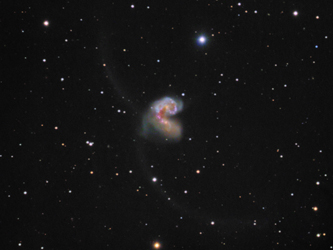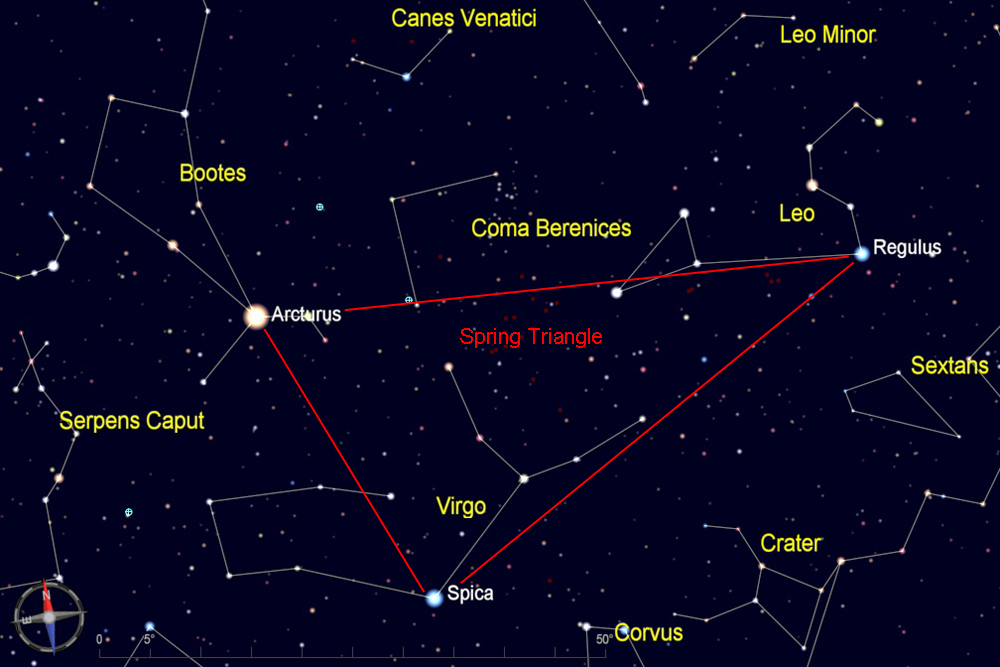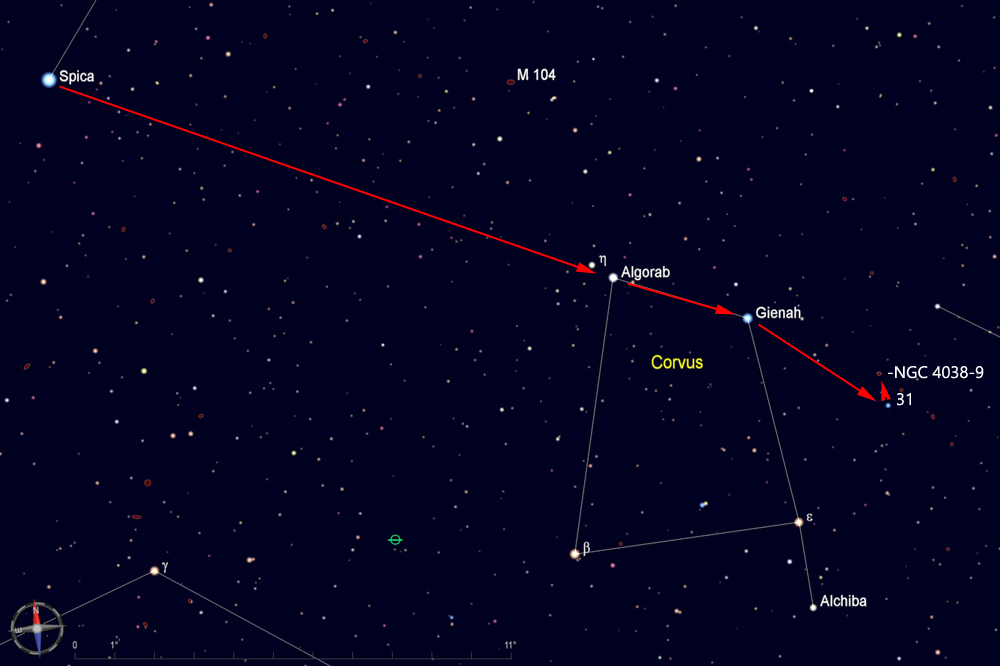This pair of interacting galaxies is also known as the Ring-Tail Galaxy. Through amateur telescopes, the two galaxies can appear as a single irregular shape with a notch in the center, or as two lobes with the northern one (NGC 4038) substantially brighter. They are about 43 million light years away. Long-duration photographs show two curving arcs of stars streaming away from the galaxies, a result of the gravitational interactions as the galaxies merge.
|
 |
| Evening visibility: |
April-June |
| Best viewed with: |
telescope |
| |
Printable chart (pdf) |
View larger image |
Directions:
Start by finding the Spring Triangle, which consists of three widely-separated first magnitude stars--Arcturus, Spica, and Regulus. The Spring Triangle is high in the southeast sky in early spring, and in the southwest sky by mid-Summer. (To get oriented, you can use the handle of the Big Dipper and "follow the arc to Arcturus").
For this star hop, begin at Spica in the constellation Virgo. |
 |
| Look about 20 degrees to the southwest of Spica to find the distinctive four-sided shape of Corvus, the crow. Follow the line formed by the upper two stars of Corvus (Algorab and Gienah) and extend this line the same distance to the southwest to find the star 31 Corvii. It is only magnitude 5.2 but it is the brightest star in the area and should be easy to spot in binoculars or a finderscope. Center this star in your telescope with a low-power eyepiece, then move 0.8 degrees north to reach the Antennae Galaxies. |
 |
| Star charts created with Cartes du Ciel |
| |
| |


